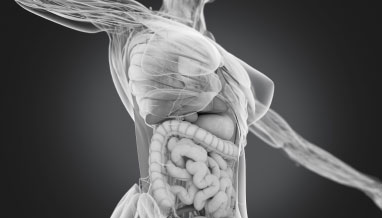Intra- and Inter-cellular Rewiring of the Human Colon during Ulcerative Colitis

By Dr. Katie E. Golden, MD
Through genome-wide association studies, we have identified a number of risk alleles for Ulcerative Colitis (UC), a type of Inflammatory Bowel Disease (IBD). The next step in discovery is to understand how these risk variants translate into pathophysiologic pathways that ultimately lead to the development and progression of disease. In a recent study published by Smillie et.al in Cell,1 researchers use single cell sequencing of intestinal tissue biopsies from diseased and healthy patients to create a cell atlas that lends novel insight into the cellular pathways that link implicated genes to UC pathophysiology.
We know that the pathology behind UC is a multifactorial interplay between dysregulation of innate and adaptive immunity, a breakdown of the gut mucosal barrier function, and an aberrant response to intestinal pathogens. We have yet to discover how risk loci from implicated genes influence the cellular changes that lead to this dysfunction. To address this critical knowledge gap, researchers used single-cell RNA sequencing to create a cell atlas of 366,650 cells from intestinal biopsies from both healthy individuals as well as UC patients in a variety of disease states. Their investigations yielded a number of novel discoveries that helps us understand the mechanisms that lead to this complex, heterogeneous disease.
Through their cell mapping, investigators identified 51 cell subsets of colonic mucosa, which included epithelial, stromal, and immune cell lineages. Biopsies from diseased tissue exhibited proliferation of microfold-like cells (which reside in lymphoid tissue and play an important role in pathogen recognition), inflammatory monocytes and fibroblasts, and T cells that express CD8 and IL-17. These pro-inflammatory cells create interactive hubs that promote deleterious inflammation unique to UC pathology. They also discovered an enriched gene that codes for a specific cytokine receptor on the inflammatory fibroblasts. The presence of the receptor predicts cellular response to anti-tumor necrosis factor (anti-TNF), a pathway that may have important implications for patient’s response to monoclonal anti-TNF antibody therapy.
The researchers furthermore identified co-expression of genes within implicated cells, suggesting the presence of evolutionary convergence and allowing them to nominate causal genes and their functions across risk loci. Their work lays exciting groundwork for linking genetic loci with observed changes in UC pathophysiology, and is an important example of the potential for rigorous genetic research to translate into therapeutic interventions for patient’s suffering from complicated, heterogeneous disease.

